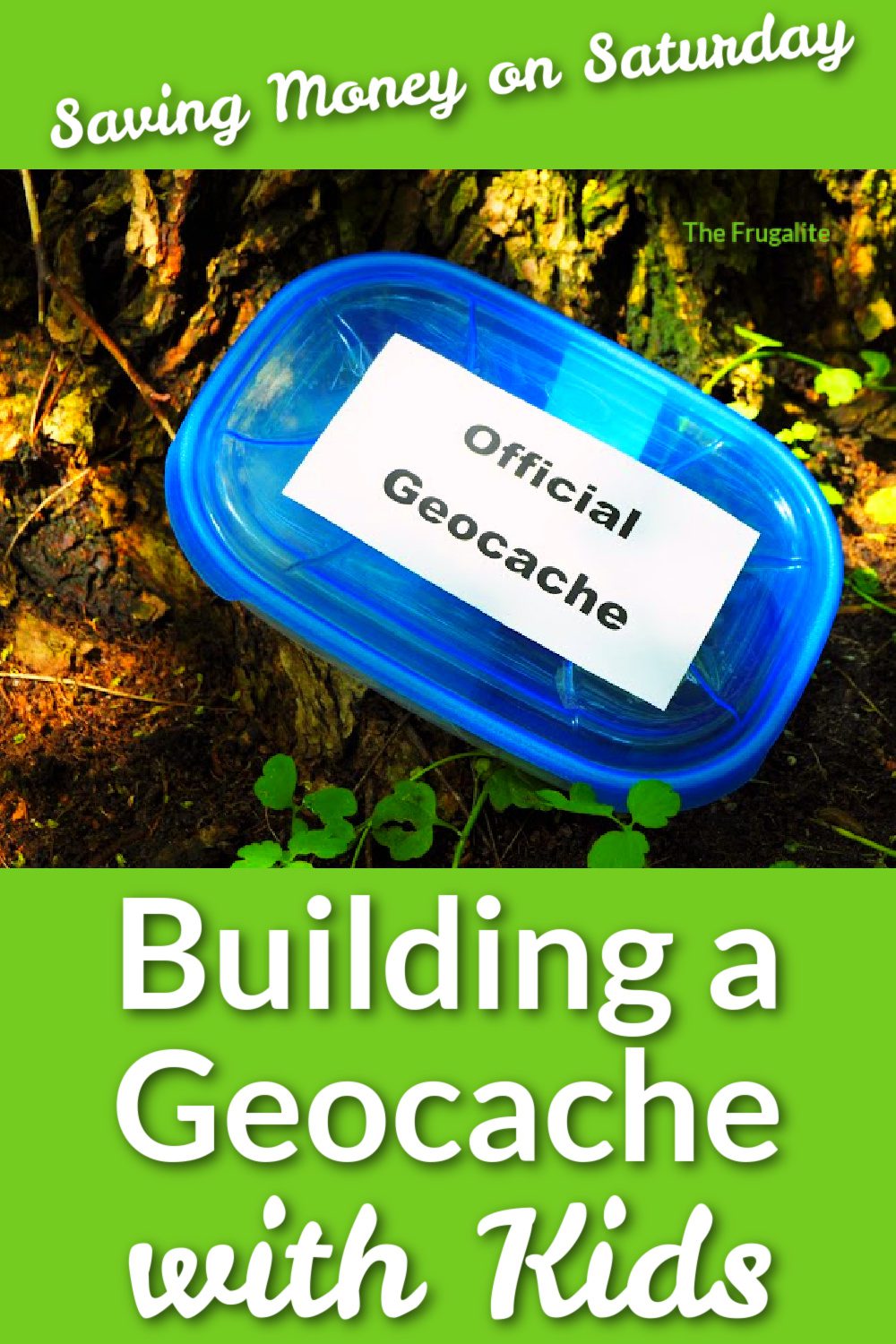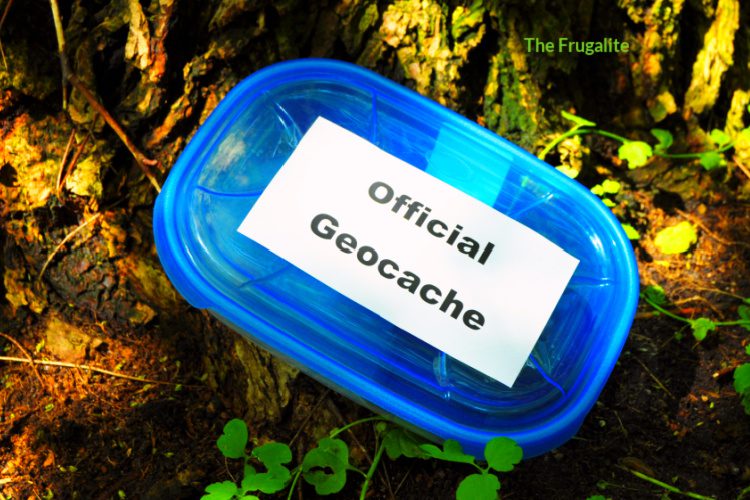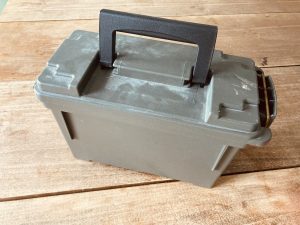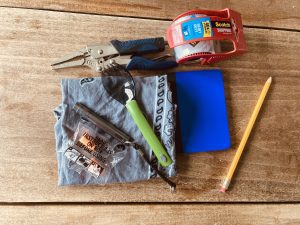(Psst: The FTC wants me to remind you that this website contains affiliate links. That means if you make a purchase from a link you click on, I might receive a small commission. This does not increase the price you’ll pay for that item nor does it decrease the awesomeness of the item. ~ Daisy)
Let’s face it: kids are expensive. While there are frugal ways to buy their needs, it can often be difficult to find frugal ways to keep them entertained. That’s where building a geocache comes in.
Picture a world-wide scavenger hunt that anybody can partake in. A world filled with treasure chests all around you, just waiting to be found. That is geocaching, and you can get started with hiding your own cache on the cheap this Saturday. This serves as an incredibly frugal means of keeping the kids entertained for several hours – often with only a $15-20 investment.
So without further ado, here’s how to save money on a Saturday by building a geocache.
Set up an account with Geocaching.com.
This is fairly straightforward, and the site will walk you through what you’ll need to do. Let your kids help you to pick your account name and then spend a bit of time looking through the interactive map of your area so that they can see all of the hidden geocaches that you never even knew you were surrounded with.
There are likely to be dozens of them hidden right around your home. You’re about to add one more to the map.
Make sure where you want to hide your cache is available.
Geocaching has some pretty strict rules as to where a cache can be hidden or not. You want to make sure that nobody is going to be trespassing on private property when they search for your cache. You also want to make sure that your cache is the appropriate distance away from nearby caches. You can do this by checking the map on geocaching.com under the ‘hide a cache’ tab.
To get there click the ‘Play’ tab at the top left of the home page. Click ‘Hide a geocache.’ Click ‘Hide a cache’ (yes, again). Then search locations.
All locations which are too close to other caches will be marked by a red circle.
Find a watertight container.
While an old ammo can is the gold standard for these, they tend to cost somewhere in the ballpark of $25 for the metal ones. The plastic ones are far cheaper, and hold up to the weather just as well (provided they’re kept out of direct sunlight). Harbor Freight tends to have these plastic .30 cal ammo cans for somewhere in the ballpark of $5. Make sure you take a coupon with you (Harbor Freight sends these out every other week, it seems) so that you can get a discount/free stuff when you go.
Other containers which are suitable include bison tubes, Tupperware containers with latching lids with a rubber seal, and wide-mouthed Nalgene bottles.
Fill your container with swag.
The next step of the process is to fill your container to the brim with all kinds of cool goodies for treasure hunters to swap. That’s part of the fun with geocaching. Once you find a cache, you trade out something that’s inside of it with something you have with you of equal or greater value.
Typically, the more difficult the cache is to find, the better the stuff inside will be. Too many muggles (non-geocachers) who didn’t appreciate the geocaching community downloaded the geocaching app to their phone, and have since filled all of the easy caches out there with junk.
If you fill your container with rocks, acorns, or trash, you’re not helping out the game any.
Also, never put food in your cache of any sort. I don’t care if it’s a Clif bar, instant coffee, Jolly Ranchers, or what not. To start with, this is gross. Would you eat candy left behind by a stranger? Would you trust it enough to let your kids eat it? Next, the elements often cause these items to melt all over the contents of the cache.
More than once, I’ve stumbled upon a cache that had melted Jolly Rancher all over everything. It’s disgusting. Nobody wants to mess with that. And finally, bears have very good noses. If you place food in your cache, it is only a matter of time before a bear destroys it.
Here are some better examples of items to place in your cache…
- Survival supplies
- Compasses
- New toys
- Small tools
- Books
- Keychains
- Hand-carved trinkets
- Travel bugs
- Geocoins
Some of my favorite swag finds include gift cards, dollar bills, a multitool, survival whistles, and geocoins.
A note on travel bugs and geocoins
This is another really fun aspect of geocaching which was largely ruined by mass muggle invasion created by the smartphone app. Travel bugs are dog tags with a serial number on them people attach to random trinkets. Geocoins are a serialized metal coin. Both of these allow the hider and the user to track where the item is at.
For example, check out this travel bug here. You can see that it’s traveled all over the world! Pretty cool, right?
Don’t forget to throw in a logbook!
I like to use small notebooks. On the front page you mark the name of the cache and some brief instructions on what somebody has just found (should a muggle find it). The remaining pages will be for cache finders to sign. Eventually, you’ll have to come back and swap out the old log with a new one. It’s a lot of fun to look through these older log books though.
Finders often will write cool anecdotes about their experiences finding the cache that kids find a lot of joy out of reading.
Optional: Decorate the cache
If you plan on building an elaborate puzzle to hide your cache with, you may want to consider decorating your cache to match. For example, some people glue fake leaves and sticks to the side of their box so that it will be better camouflaged.
I found a cache one time which was nothing other than a bison tube inserted into a fake plastic skull. Other people have used birdhouses, hidden logs, and other tricks to hide their cache in plain sight. You’re really only limited by your imagination here.
Do you plan a puzzle?
For your first cache hide, I wouldn’t recommend making it a puzzle cache. Stick with a traditional cache hide until you get the hang of things. You can still make a fun riddle to assist other geocachers with finding your hide with a traditional cache, but that’s as elaborate as I would make this.
Go out and hide your cache!
This is the really fun part. You’re going to need either a GPS or your phone when you do this step. Head out with your kiddos into the great unknown, taking your cache with you. I recommend keeping it in a backpack as you walk along the way so that you don’t have the whole world watching you walk around with an ammo box in public.
It makes for uncomfortable conversation.
Anyways, get out to where your prior searches have revealed to be a proper place to hide your cache. Stow it out of sight (don’t bury it), perhaps covered with a few sticks behind a tree, so that the casual passerby will miss it.
Then, use either your GPS or your smartphone to record the coordinates of where you hid the cache. This step is done!
Enter the cache details onto Geocaching.com
This is the final step. Go through the process on the website (it’ll walk you through it), entering in all of the information a fellow cacher will need in order to find your geocache. Then, publish the cache. A reviewer will examine everything to ensure the cache is following all the rules, and (if you’re doing all this on Saturday), your cache will likely be posted for the world to find by Monday or Tuesday.
Read the logs online.
To me, this is the best part about the whole thing. You’ll receive an email notification every time that somebody finds your cache. Many times, people leave really fun notes online when they log the cache. Geocachers are a fun lot and are genuinely thankful for the experience you’ve provided for them.
What’s cool about this is how just a little bit of legwork up front can result in a lot of enjoyment for years down the road. Showing the kids the status of all their caches every Monday evening after school is a fun way to start off the week.
Now go out and hunt!
I think one of the greatest things about geocaching is that it’s a great way to give back to the community. If you’ve gone out – either by yourself or with kids – before on an all day hunt, you were able to do so because there were people out there who took the time to craft something you would enjoy.
Those hiders bettered their community by their doing so. The cool thing is that you have the opportunity to do the same! If you’ve ever bemoaned the lack of frugal activities to keep your kids entertained before, it’s fellow cachers (who also may have kids) who have provided you an opportunity. You, in turn, can do the same thing for others.
So get out there and hide a cache this Saturday. Your kids, your community, and your wallet, will thank you.
Have you ever built or searched for a geocache?
What did you put in your cache? Do you take your children hunting for the geocache? Share your adventures in the comments.
About Aden
Aden Tate is a regular contributor to TheOrganicPrepper.com and TheFrugalite.com. Aden runs a micro-farm where he raises dairy goats, a pig, honeybees, meat chickens, laying chickens, tomatoes, mushrooms, and greens. Aden has two published books, The Faithful Prepper and Zombie Choices. You can find his podcast The Last American on Preppers’ Broadcasting Network.














2 thoughts on “Saving Money on Saturday: Building a Geocache with Kids”
We’ve hidden treasure boxes with treasure maps. Been a while since our kids (and friends kids) were young but treasure hunts were fun. Only on our property of course.
We’re participated in a neighborhood Halloween scavenger hunt organized by another parent. Always glad to see the kids outside and using their noggins to work thru clues. Geogache ups the game, regardless of what they find.
Thanks, I’m going to look into this tonight when my kiddos are in bed , our local Kmart had explorer books , compasses , cool pens and survival tools on clearance for as low as 50cents so I brought a few to make up exploring kits for future presents this seems like a perfect use . In Australia I won’t be able to source the cool ammo cans but I’ll pick up a plastic tub and decorate it.